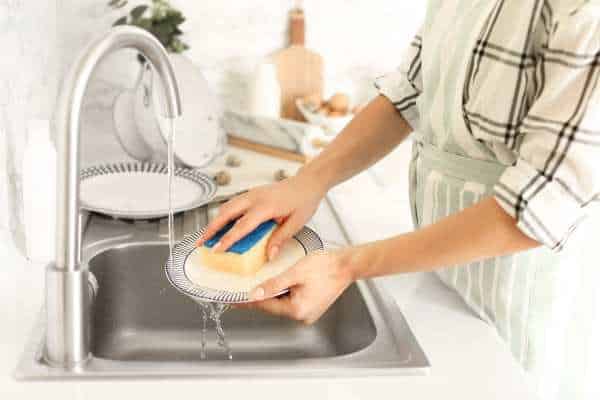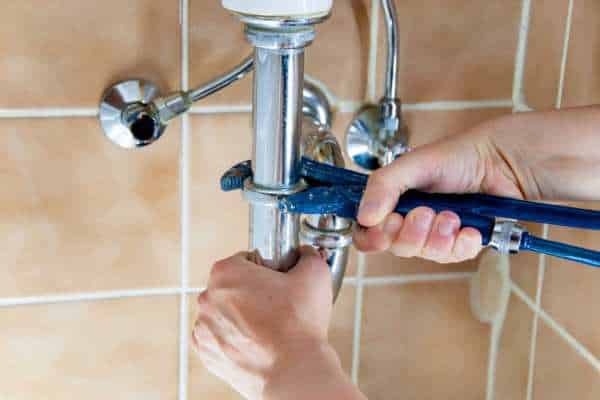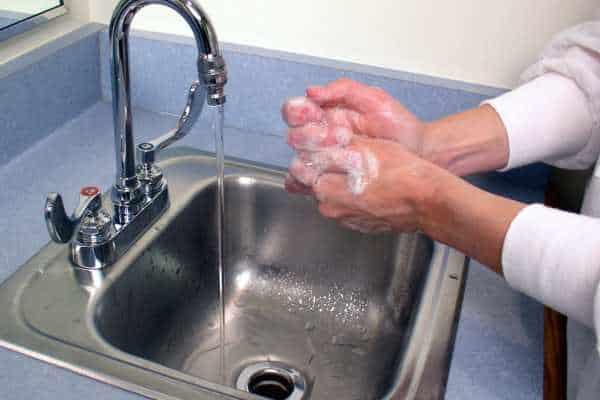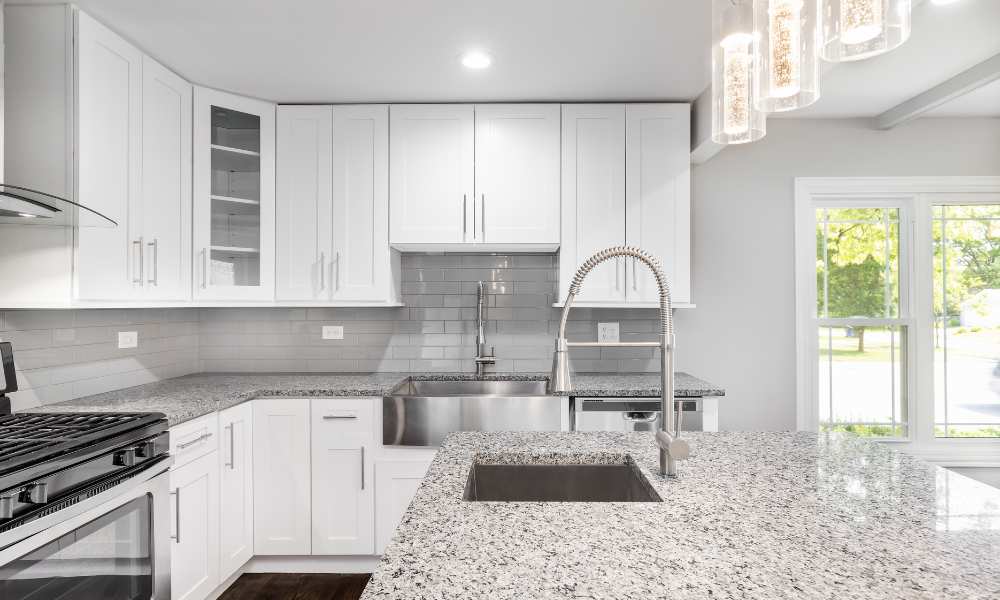Sealing your kitchen sink to the countertop is a crucial step in maintaining a clean and efficient kitchen. This guide provides a comprehensive look at how to seal kitchen sink to countertop, ensuring a watertight barrier that prevents water damage and mold growth beneath the sink area. Whether you’re installing a new sink or refreshing an existing setup, the right sealant and technique can make all the difference. Follow our step-by-step instructions to achieve a professional finish that not only looks great but also enhances the longevity and functionality of your kitchen. Let’s dive into the essential tools, materials, and methods to ensure a successful seal every time.
Essential Tools and Materials Needed
Before you begin the process of sealing seal kitchen sink to Countertop, it’s important to gather all the necessary tools and materials. You will need a high-quality silicone sealant specifically designed for kitchen use, which ensures durability and resistance to water and mold. A caulking gun will help in the precise application of the sealant. Additionally, have a pair of gloves to protect your hands and a clean cloth or sponge to wipe away any excess. It’s also wise to keep mineral spirits or a similar solvent handy for cleaning up any mistakes. Ensuring you have these items ready will streamline your project and help achieve a cleaner, more professional finish.
Choosing the Right Sealant for Your Countertop

Selecting the appropriate sealant is critical for effectively sealing your kitchen sink to the countertop. Silicone-based sealants are often recommended due to their flexibility and strong waterproof properties, making them ideal for areas exposed to water. When choosing a sealant, consider the material of your countertop and sink. For granite or marble, a clear silicone sealant may be best, as it won’t stain the surfaces. On the other hand, acrylic sealants might be more suitable for laminate countertops due to their ease of use and color matching capabilities. Always ensure the product is suitable for kitchen use, to withstand frequent cleaning and exposure to heat.
Preparing the Sink and Countertop Surface
Before beginning the sealing process, it’s essential to properly prepare both the sink and countertop surfaces. Start by thoroughly cleaning the area to remove any debris, dust, or old sealant residues. Use a mild detergent and a soft cloth to avoid scratching the surfaces. For tougher residues, a putty knife can be gently used to scrape off any remaining particles. Ensure the surfaces are completely dry as moisture can prevent the new sealant from adhering properly. If your countertop material is sensitive, consider using a cleaner specifically designed for it to avoid any damage. Proper preparation ensures a strong bond and a seamless finish that lasts.
Steps to Clean the Sink and Countertop

Before applying any sealant, it’s essential to thoroughly clean the sink and countertop. Start by removing any debris and old sealant residues with a putty knife or scraper. Use a heavy-duty cleaner to wipe down the surfaces, ensuring they are free from grease, soap scum, and water stains. Rinse thoroughly with water and dry with a clean towel. For the best results, use rubbing alcohol on a cloth to wipe the area once more, which will remove any remaining oils and ensure the sealant adheres properly. This preparation step is critical for a durable seal and should not be overlooked.
Applying the Sealant: Best Practices
Applying sealant correctly is key to ensuring a durable bond between your kitchen sink and countertop. Begin by evenly applying a bead of silicone-based sealant around the perimeter of the sink’s underside that contacts the countertop. Use a caulking gun for precision and control, making sure to fill all gaps without overextending the sealant beyond the sink’s edge. After application, smooth the sealant with a damp fingertip or a caulking tool to press it firmly into the gap and remove any excess. This method not only secures the sink effectively but also gives a neat, professional appearance. Allow the sealant to cure fully as recommended by the manufacturer before using the sink to ensure optimal adhesion and waterproofing.
Smoothing Out the Sealant for a Perfect Finish
Achieving a perfect finish when sealing your kitchen sink to the countertop involves careful smoothing of the sealant. Start by applying a bead of sealant evenly along the joint between the sink and countertop. Using a damp fingertip or a specialized smoothing tool, gently press down and drag along the bead to flatten it into a smooth, even layer. This not only ensures a neat appearance but also enhances the seal’s effectiveness by eliminating gaps and air bubbles. For best results, dip your tool or finger in soapy water to prevent sticking and allow for smoother movement. Patience and precision during this step will guarantee a professional-looking seal that lasts.
Allowing the Sealant to Cure: Time and Conditions

Allowing the sealant to cure properly is vital for ensuring a durable and effective bond between your kitchen sink and countertop. Typically, silicone sealants require about 24 hours to fully cure, though this can vary based on humidity and temperature conditions. It’s best to avoid any contact with the adhesiveduring this period to prevent it from shifting or developing leaks. For optimal results, maintain a room temperature between 65°F and 75°F and ensure the area is well-ventilated. Checking the manufacturer’s instructions for specific curing times and recommendations can also help achieve the best seal possible, protecting your kitchen from water damage for years to come.
Testing the Sealant’s Effectiveness
After applying the sealant, it’s essential to test its effectiveness to ensure a watertight seal between the sink and countertop. Begin by inspecting the perimeter for any gaps or uneven areas. Once satisfied with the visual inspection, conduct a water test: let water run near the sealed edges and watch for leaks. If water seeps through, additional adhesive may be necessary. Allow the adhesive to fully cure as recommended by the manufacturer before testing to guarantee accurate results. Regular checks over time will also help catch any failures early, maintaining the integrity of your kitchen’s wet areas.
Maintenance Tips to Prolong the Seal
Regular maintenance is key to ensuring the longevity of the seal between your kitchen sink and countertop. To keep the seal in top condition, clean the area frequently with mild soap and avoid harsh chemicals that can degrade the sealant. Inspect the seal periodically for any signs of cracking or peeling, and reapply adhesive as needed to prevent water damage and mold accumulation. Additionally, avoid placing excessive weight on the edges of the sink, which can cause the seal to break. By following these simple tips, you can extend the life of your seal and keep your kitchen looking and functioning at its best.
Common Mistakes to Avoid When Sealing Sinks

When sealing a kitchen sink to a countertop, avoiding common mistakes is key to a flawless finish. One frequent error is not cleaning the surface thoroughly before application, which can prevent the adhesive from adhering properly. Additionally, applying too much adhesive can lead to a messy, uneven finish that’s difficult to clean up. It’s also important to use the correct type of adhesive for the material of your countertop and sink to ensure the best bond and durability. Lastly, rushing the curing process can compromise the seal’s integrity, leading to leaks and water damage over time. Taking the time to do it right will save you from future headaches and repairs.
Conclusion
Sealing your kitchen sink to the countertop effectively is an essential task that enhances both the functionality and aesthetics of your kitchen. By following the guidelines outlined in this article on how to seal kitchen sink to countertop, you can ensure a durable and watertight seal that protects your kitchen from water damage and mold growth. Remember, the key to a successful sealing job lies in selecting the right materials, preparing the surfaces properly, and allowing adequate time for the adhesive to cure. With these steps mastered, you can enjoy a beautifully sealed sink that complements your kitchen’s design while providing long-lasting protection.

